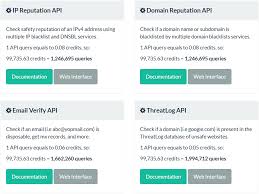Understanding API Credits: Meaning, Uses, and Getting the Most Out of Them
Intro: What Are API Credits?
Imagine you’re given tickets to use rides at an amusement park. Some rides take more tickets, and some take less. API credits are kind of like those tickets, but for computer programs. In this blog, we’ll dive into what API credits are, why they’re so important, and how you can make the most of them. You’ll learn how these “tickets” help you use different tools and systems effectively, and why managing them wisely can keep everything running smoothly.
 – Visual representation of API credits as tickets.
– Visual representation of API credits as tickets.
Why Are API Credits Important?
API credits are crucial because they control how many times you can use a specific service or feature within a given time frame. Think of them like data on your mobile plan. Just like you need to manage your data to avoid extra charges, managing API credits helps you avoid hitting limits or incurring extra costs.
What Readers Can Expect
In this article, we’re going to cover everything from the basic definition of API credits to their practical uses. We’ll also explore how you can leverage these credits on popular platforms like Zoho CRM, Google, and OpenAI, and share tips to get the most out of them.
Breaking Down API Credits
What Exactly Are API Credits?
Let’s start with the basics. API stands for Application Programming Interface. It’s a way for one software to interact with another. Now, API credits are units that measure how much of these interactions or “calls” you can make. Each time you use an API to fetch data or automate a task, you spend a certain amount of credits.
How Do Different Platforms Use API Credits?
- Zoho CRM: Zoho uses API credits to manage how many times you can call their services, like getting customer data.
- Google: Google’s services, such as Maps and Places, offer a monthly credit that lets you access data up to a certain limit for free.
- OpenAI: OpenAI charges for the use of their advanced AI models in units of API credits, helping you manage and predict your costs.
 – Different platforms utilizing API credits.
– Different platforms utilizing API credits.
Maximizing Your API Credits
Managing API credits efficiently can save both time and money. Here are some practical tips to make the most out of your credits:
1. Monitor Usage Regularly
Frequently check how many credits you’ve used. Platforms often provide dashboards where you can see your consumption. This helps in planning and optimizing tasks that require API calls.
2. Optimize API Calls
Avoid unnecessary API calls. Batch your requests or filter the data you retrieve to limit bandwidth. For example, rather than fetching data every minute, consider if every hour might suffice.
3. Leverage Free Tiers and Trials
Many services offer a free tier or trial period. Utilize these to test and understand your actual needs before committing to a paid plan.
4. Use Caching Strategically
Caching results of frequent calls can significantly reduce the number of API calls you need to make. This means storing data temporarily so you don’t have to fetch the same data repeatedly.
5. Keep Up With Documentation
Always refer to the API documentation for the service you are using. This will give you insights into optimizing your usage and understanding any changes in API credit policies.
Common Questions About API Credits
1. What Happens When I Run Out of API Credits?
You’ll generally stop being able to make new API calls until your credits are replenished, either through purchasing more or waiting for your monthly allowance to reset.
2. Can I Purchase Additional API Credits?
Yes, many services offer the option to buy additional credits. However, managing and optimizing your existing credits is usually more cost-effective.
3. Do Unused API Credits Roll Over?
This depends on the service provider. Some platforms allow roll-over credits, while others reset them at the end of the billing period.
4. How Are API Credits Measured?
API credits are measured based on the resources consumed by each API call. Different calls may cost different amounts of credits depending on their complexity and the data retrieved.
5. Are There Different Types of API Credits?
Yes, for example, some platforms differentiate between API credits for fetching data versus real-time event subscriptions (WebSocket credits).
Wrapping It All Up
API credits might sound complicated, but they’re a handy way to measure and manage your interactions with different services. Just like you wouldn’t want to run out of mobile data, keeping an eye on your API credits helps you avoid disruptions and extra costs. By monitoring usage, optimizing calls, and leveraging free tiers, you can get the best value out of your API credits. So go ahead, dive into those dashboards, and take control of your API adventures!

